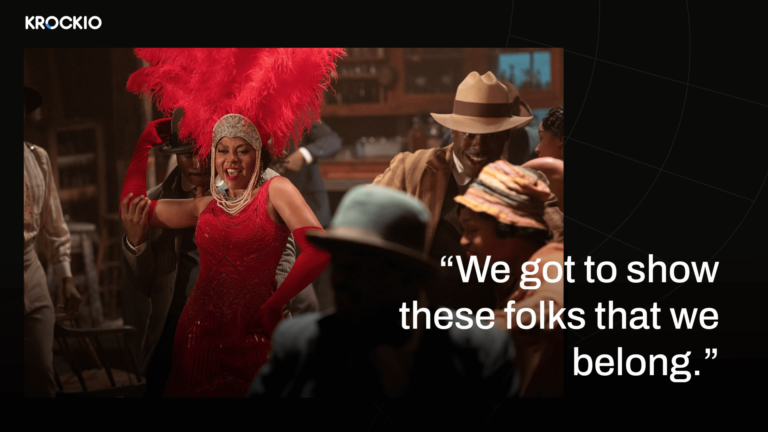In a world where there are many stories about love, adventure, and drama, there is an interesting niche that loves stories that are weird, strange, and don’t make sense. These stories push the limits of how stories are usually told. They take readers and viewers on a trip where logic takes a back seat and imagination rules. In this look at absurd stories, we’ll jump right into a place where the strange and strangely real are honored and where stories can go anywhere.
The Surreal and the Nonsensical: What Sets Them Apart?
Surrealism: Surreal narratives transport readers into dreamlike worlds where the laws of physics and reason no longer apply. They often feature bizarre juxtapositions, dream logic, and an exploration of the subconscious mind. Think of Salvador Dalí’s melting clocks or the whimsical worlds of Lewis Carroll’s “Alice’s Adventures in Wonderland.”
Nonsense: Nonsensical narratives, on the other hand, are characterized by their deliberate rejection of logical coherence. They revel in wordplay, absurd situations, and a disregard for cause and effect. Lewis Carroll’s “Jabberwocky” is a classic example, where made-up words and fantastical creatures take center stage.
The Masters of Absurd Storytelling
Alice’s Wonderland: Lewis Carroll’s Nonsensical Wonderland

Lewis Carroll’s “Alice’s Adventures in Wonderland” is a timeless masterpiece of nonsensical storytelling. As Alice tumbles down the rabbit hole, readers are plunged into a world where tea parties are endless, cats disappear at will, and talking rabbits set the stage for a journey through the utterly absurd.
Carroll’s wordplay and disregard for traditional narrative structure make Wonderland a hallmark of nonsensical storytelling.
Kafkaesque Absurdity: Franz Kafka’s Surreal Worlds

Franz Kafka, known for his surreal and existential narratives, invites readers into the labyrinthine realms of absurd bureaucracies and existential crises. In “The Metamorphosis,” Gregor Samsa awakens one morning to find himself transformed into a giant insect, setting the stage for an exploration of alienation and the absurdity of existence. Kafka’s works continue to challenge and bewilder, blurring the lines between reality and nightmare.
The Appeal of Surreal Storytelling
Absurd narratives may seem perplexing at first glance, but their appeal lies in their ability to mirror the chaotic, unpredictable nature of life itself. By shunning traditional storytelling conventions, they offer a fresh perspective on reality. Surreal stories often serve as a lens through which to examine the complexities of the human condition, from the mundane to the profound.
Beneath the whimsy and absurdity, many of these narratives carry a potent existential undercurrent. They grapple with questions of identity, meaning, and the human experience. In the absurd, authors find a unique canvas on which to explore the fundamental absurdity of existence itself.
Why Surreal and Nonsensical Stories Resonate with Readers?
A Release from the Mundane
Life, with its routines and responsibilities, can sometimes feel overwhelmingly mundane. Surreal and nonsensical stories offer a delightful escape from the ordinary. They transport readers to fantastical realms where anything is possible, and the rules of the everyday world no longer apply. In these narratives, the mundane is replaced by the extraordinary, infusing a sense of wonder and excitement into the reader’s experience.
The Power of Imagination
At the heart of surreal and nonsensical stories lies the unbridled power of imagination. Authors and creators in this genre are free to let their creativity run wild, unburdened by the constraints of logic and reason. This boundless creativity leads to the birth of characters, settings, and scenarios that are unlike anything found in the real world. Readers, in turn, are invited to exercise their own imaginations as they navigate these fantastical tales.

Challenging Perceptions and Assumptions
Surreal and nonsensical stories have a remarkable ability to challenge the way readers perceive the world. By presenting reality in a distorted or absurd manner, these narratives encourage readers to question their own assumptions and preconceptions. They remind us that reality is subjective and that the boundaries of possibility are more flexible than we often assume.
How to Craft a Compelling Story with Illogical Elements
1. Embrace the Suspension of Disbelief
One of the first steps in crafting a story with illogical elements is to embrace the concept of suspension of disbelief. This term, coined by poet Samuel Taylor Coleridge, refers to the audience’s willingness to accept implausible or fantastical elements in a work of fiction. To create a compelling narrative, you must establish an internal logic within your story world, even if that logic defies real-world rules.
2. Define Your Story’s Internal Logic
While your story may embrace the absurd, it should still operate according to its internal logic. Whether it’s a world where gravity is a mere suggestion or a character who communicates with sentient household appliances, establish the rules and boundaries that govern your narrative. Consistency within this framework is key to keeping readers engaged.
3. Create Relatable Characters
Even in the midst of the absurd, your characters should remain relatable. Readers connect with characters who possess human emotions, desires, and flaws, regardless of the fantastical elements around them. The more readers can empathize with your characters, the more they’ll invest in the story’s outcome.
4. Employ Humor and Satire
Nonsensical elements often lend themselves well to humor and satire. Consider using absurdity to comment on real-world issues, society, or human behavior. Satirical elements can add depth to your story while eliciting laughter and contemplation from your audience.
5. Emphasize Emotional Resonance
Under the illogical surface, your story can still carry emotional weight. Use the absurd as a backdrop to explore universal themes such as love, loss, identity, and the human condition. When readers can connect emotionally with your story, they’re more likely to forgive its logical inconsistencies.
6. Employ Wordplay and Absurd Language
Language itself can become a tool for navigating nonsense. Play with words, create your own vocabulary, and embrace linguistic absurdity. Writers like Lewis Carroll in “Jabberwocky” and Dr. Seuss in “The Lorax” have shown how inventive language can elevate an illogical narrative.
7. Explore the Uncanny
The concept of the uncanny involves the familiar appearing strange or unsettling. Use this psychological phenomenon to your advantage by introducing elements that blur the line between the ordinary and the bizarre. This can create a sense of unease or wonder in your readers.

8. Encourage Interpretation
Illogical narratives often invite multiple interpretations. Encourage your readers to explore and interpret the story’s meaning in their own way. By leaving room for ambiguity, you can stimulate discussion and engagement.
9. Experiment with Structure
Don’t be afraid to experiment with the structure of your narrative. Use nonlinear timelines, unreliable narrators, or fragmented storytelling to enhance the sense of absurdity. Just ensure that your structural choices serve a purpose within the story.
10. Seek Inspiration from Absurdist Literature
Absurdist literature, characterized by its exploration of the irrationality of existence, can provide valuable inspiration. Dive into works by authors like Albert Camus, Franz Kafka, and Samuel Beckett to gain insights into crafting narratives that challenge logic.
Conclusion
As we conclude our exploration of absurd storytelling, we commend the authors who boldly venture beyond the bounds of logic and reason. Embracing the absurd opens doors to limitless narrative possibilities. It’s worth noting that some of the most profound and contemplative stories emerge from the unusual and the bizarre. As you return to the real world, dear reader, may you retain the enchantment of the absurd, ever prepared to embark on new imaginative journeys into uncharted realms within your mind.









